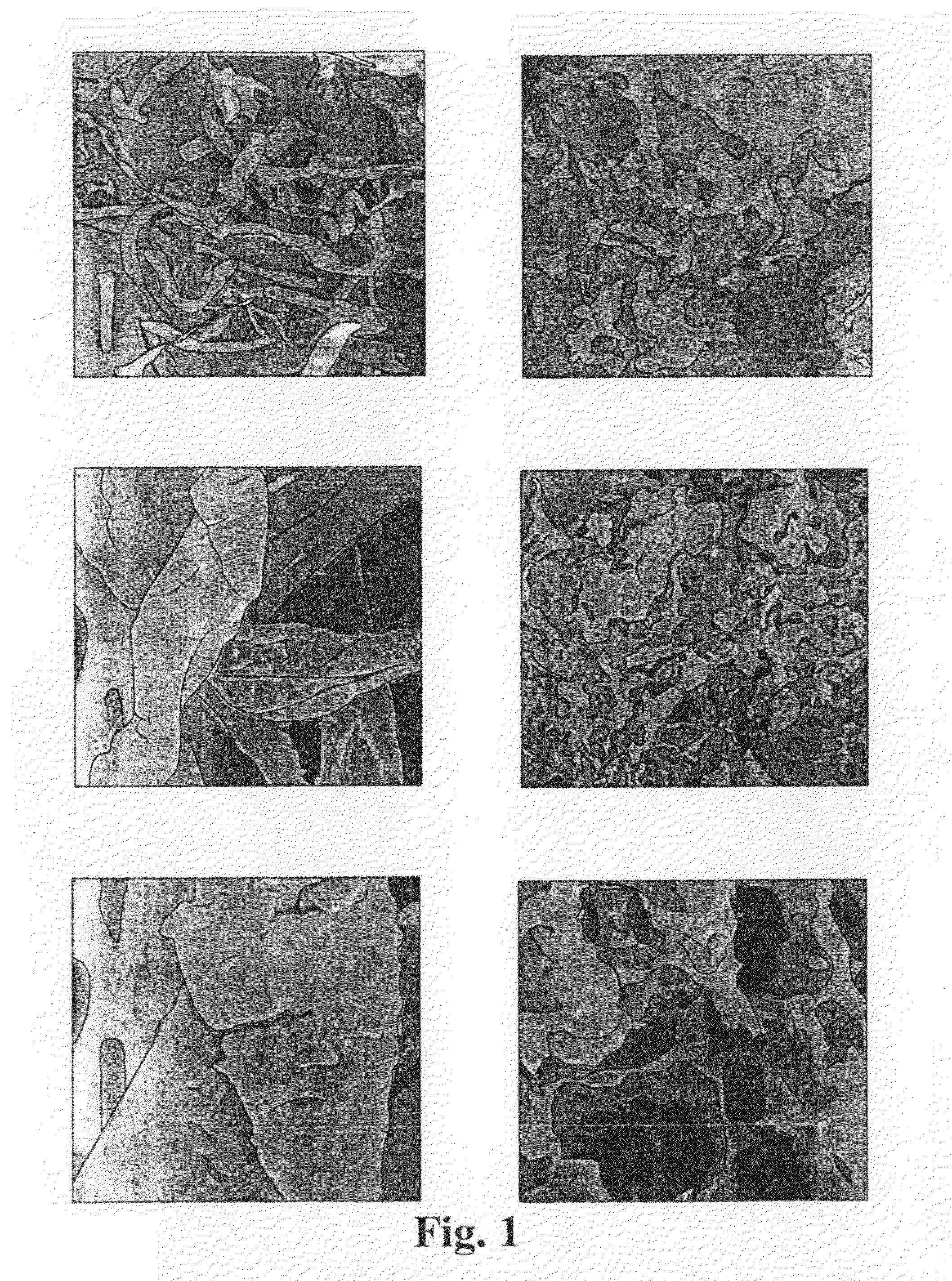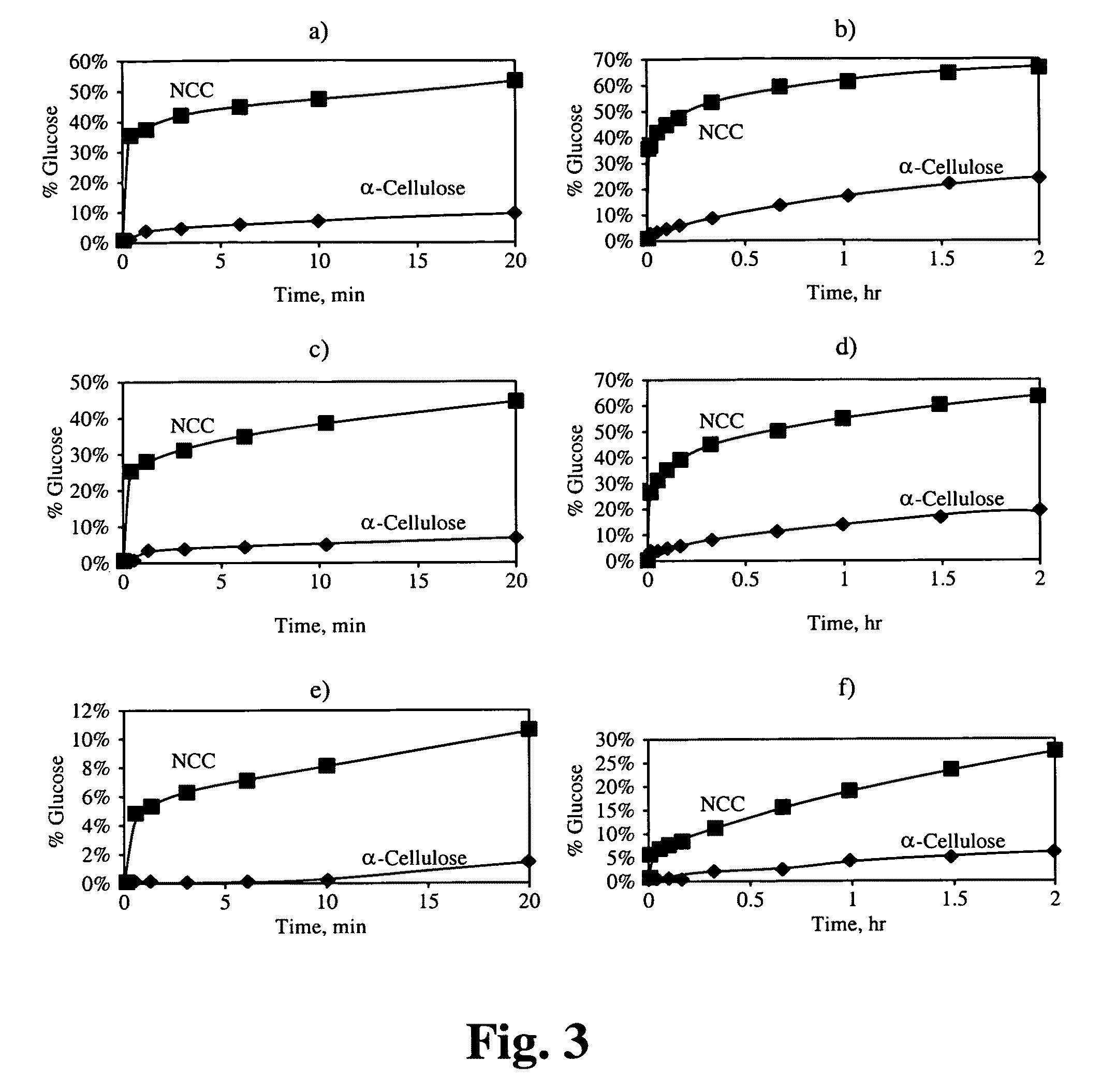Use of non-crystalline cellulose as a medicine tablet medium
a technology of non-crystalline cellulose and medicine tablets, which is applied in the direction of glucose production, saccharide production, pill delivery, etc., can solve the problems of limited crystallization degree of depolymerization of cellulose by acid or enzyme hydrolysis, and the concept can be rather ill-defined, so as to achieve greater enzymatic hydrolysis, lower absorbance, and lower melting point
- Summary
- Abstract
- Description
- Claims
- Application Information
AI Technical Summary
Benefits of technology
Problems solved by technology
Method used
Image
Examples
example 1
Preparation of Treated α-Cellulose
A process was developed wherein the crystalline structure of α-cellulose was modified into an essentially amorphous form resulting in “non-crystalline cellulose (NCC)”.
The overall process was quite simple: solid-liquid mixing under atmospheric pressure at moderate temperatures and separation of the solid from the liquid. The yield of the solid product in the process was near quantitative (above 90%). There was no decomposition of carbohydrate during the process as indicated by carbohydrate analysis.
Dry α-cellulose was ground into granules and / or powders and mixed with concentrated sulfuric acid under the following example conditions:
Concentration of sulfuric acid:65 weight %-72 weight %Liquid / solid proportion:1 dry gram of solid to 1-4 ml of sulfuric acid of the above strengthTemperature:20-60° C.
The mixture was agitated until a uniformly wet condition was attained. The resulting mixture was left for 5-60 (or 20-120) minutes at room temperature. Wat...
example 2
Characterization of Treated Cellulose
The treated cellulose (NCC) of Example 1 was then characterized.
Carbohydrate analysis was performed using NREL LAP-002 “Determination of Carbohydrate in Biomass by HPLC” (1996). Ash content was performed using NREL LAP-005 “Determination of Ash Content in Biomass” (1994). Moisture levels were determined using standard procedures. Lignin levels was performed using “Determination of Acid Insoluble Lignin” NREL LAP-003 (1995) and LAP-004 “Determination of Acid Soluble Lignin” (1996).
A SEM was used to take pictures of the original α-cellulose and the resulting NCC using standard procedures. The resulting micrographs at ×200, ×1000, and ×3000 are shown in FIG. 1.
The original α-cellulose, microcrystalline cellulose, and the resulting NCC were subjected to X-ray diffraction using standard procedures. The resulting XRD patterns are shown in FIG. 2.
The original α-cellulose and the resulting NCC were subjected to enzymatic hydrolysis at various enzyme load...
example 3
Measurement of Cellulase Activity
Hydrolysis of cellulose by cellulase enzyme is a solid-liquid heterogeneous reaction. As such, the reaction is strongly affected by the physical resistances caused, most notably, by the crystalline structure. Under the influence of the crystallinity, it is difficult to obtain the intrinsic kinetic information.
The current standard method for measuring the specific activity of cellulase is based on use of filter paper as the standard substrate. It involves reaction of the substrate with cellulase enzyme followed by calorimetric measurement of released glucose. This method suffers from the fact that the overall procedure is very time-consuming and that it has low consistency in replicate tests.
The essentially amorphous form “non-crystalline cellulose (NCC)” of the present invention was used. Non-crystalline cellulose (NCC) was prepared from α-cellulose as described above in Example 1. Due to the non-crystalline nature of NCC, the initial rate of enzymat...
PUM
| Property | Measurement | Unit |
|---|---|---|
| density | aaaaa | aaaaa |
| density | aaaaa | aaaaa |
| melting point | aaaaa | aaaaa |
Abstract
Description
Claims
Application Information
 Login to View More
Login to View More - R&D
- Intellectual Property
- Life Sciences
- Materials
- Tech Scout
- Unparalleled Data Quality
- Higher Quality Content
- 60% Fewer Hallucinations
Browse by: Latest US Patents, China's latest patents, Technical Efficacy Thesaurus, Application Domain, Technology Topic, Popular Technical Reports.
© 2025 PatSnap. All rights reserved.Legal|Privacy policy|Modern Slavery Act Transparency Statement|Sitemap|About US| Contact US: help@patsnap.com



